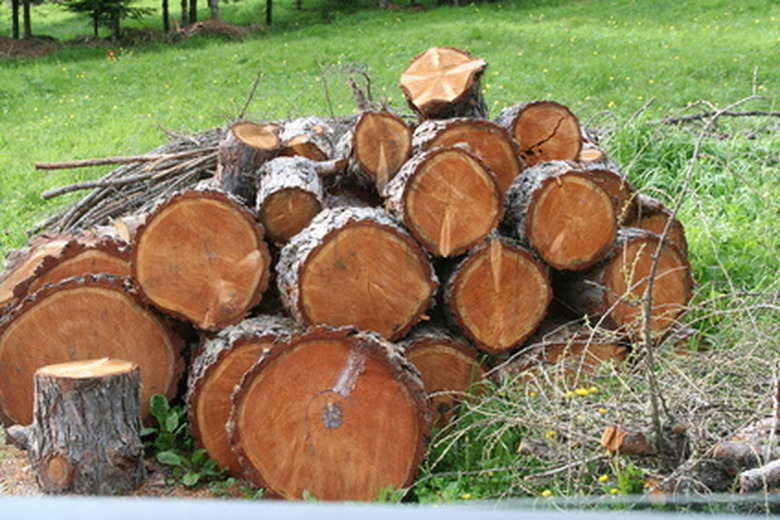How To Use Trees From Your Land To Build A House
Things Needed
-
Hand saw
-
Chain saw
-
Wood sealant or preservative
-
Flag tape
Tip
Trees harvested to be used as lumber should be cut when the sap saturation is at its lowest level. Cut trees in the late fall.
Warning
Cutting trees is dangerous work. Always wear a hard hat and eye and ear protection. Follow all safety guidelines.
Landowners who have standing timber they wish to sell, can contact a buyer who will then arrange for cutting and removal of the logs. Landowners may elect to harvest the timber. The landowner can then cut the timber length and market the harvested wood directly to local sawmills or use the felled trees to build a home or out buildings on the land. The landowner who chooses to cut down his own trees to use for home construction will have the satisfaction of using lumber from his own land as well as saving money.
Step 1
Evaluate the trees on your property to determine if you have trees suitable for harvest. The trees have to be the right species and size. Trees produce two distinct and different types of wood–hardwood and softwood. Hardwood has a high density, or is harder and more difficult to work with than softwoods. Hardwood comes from deciduous trees that lose their leaves every year. Conifers or evergreen trees produce softwood. White pine, fir, spruce and cedar are excellent softwood choices for building a log home. Maple, walnut, ash, birch and elm are all harvested hardwoods, suitable for lumber for home construction.
Step 2
Use flag tape to mark the trees you plan to cut. Obtain logs from standing, live trees. Choose tall, straight trees. Avoid twisted trees or those with broken branches and obvious damage. (Logs cut from dead trees are often stained or insect infested.) Select trees that are at least 18 inches around at the stump. Trunk length should be a minimum of 12 feet long.
Step 3
Harvest the trees. Cutting down trees is dangerous work. Follow all safety procedures and make certain that know what you are doing. If in doubt, call a professional. Cut a large notch in the base of the tree on the same side of tree as the direction in which you want the tree to fall. Cut another notch on the opposite side of the tree. As the tree starts to fall, move away quickly. The base of the tree can twist and kick back towards the sawyer. Cut trees in winter before the sap starts to rise.
Step 4
Paint or cloak the ends of the logs as soon as possible after they are cut. A petroleum based product for this purpose is available at lumberyards or building supply stores. (Shingle oil is the least expensive, however any log preservative sealant will work.) Use a wide brush or rag to saturate each end of the log to prevent splitting and cracking as the log ends dry out. (If you plan to hand peel the logs, this step should also be done when the logs are first cut.)
Step 5
Transport wood to a sawmill to be cut into boards or dried and used as house logs. A portable saw mill can be rented to process the lumber on site.
